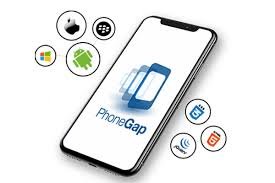
In today’s fast-paced digital landscape, where mobile applications reign supreme, developers are constantly seeking efficient ways to deliver their creations across multiple platforms. With the plethora of devices and operating systems available, cross-platform development has emerged as a key strategy to reach a broader audience while minimizing time and resources. Among the myriad of tools and frameworks available, PhoneGap stands out as a versatile solution, offering developers the ability to build robust mobile applications using familiar web technologies. In this article, we’ll delve into the world of PhoneGap, exploring its features, benefits, and how it empowers developers to unlock the full potential of cross-platform development.
What is PhoneGap?
Originally developed by Nitobi and later acquired by Adobe Systems, PhoneGap is an open-source framework for building mobile applications using web technologies such as HTML, CSS, and JavaScript. Renamed Apache Cordova after being donated to the Apache Software Foundation, PhoneGap remains a popular choice for developers looking to create cross-platform mobile apps with a single codebase.
How Does PhoneGap Work?
At its core, PhoneGap acts as a wrapper around web applications, allowing them to access native device features through JavaScript APIs. By leveraging the built-in capabilities of web technologies, developers can create rich, interactive experiences that run seamlessly on iOS, Android, and other mobile platforms. PhoneGap provides a set of plugins that interface with device-specific functionalities like camera, geolocation, and contacts, enabling developers to tap into the full potential of each platform without having to write separate code for each one.
Key Features of PhoneGap
- Cross-Platform Compatibility: One of the most significant advantages of PhoneGap is its ability to generate native binaries for multiple platforms from a single codebase. This streamlines the development process and ensures consistent user experiences across different devices and operating systems.
- Access to Native APIs: PhoneGap exposes a wide range of device APIs through JavaScript, allowing developers to incorporate native functionalities seamlessly into their applications. Whether it’s accessing the camera, accelerometer, or file system, PhoneGap provides comprehensive APIs for interacting with device hardware and software.
- Plugin Ecosystem: With a thriving community of developers, PhoneGap boasts an extensive library of plugins that extend its capabilities even further. These plugins cover a wide range of functionalities, from social media integration to augmented reality, empowering developers to add advanced features to their applications with ease.
- Built-In Development Tools: PhoneGap comes bundled with a set of development tools that streamline the app-building process. From a command-line interface for project management to a live reload feature for instant previewing of changes, PhoneGap provides everything developers need to build, test, and deploy their applications efficiently.
- Integration with Other Frameworks: While PhoneGap is often used with vanilla HTML, CSS, and JavaScript, it also integrates seamlessly with popular web frameworks like AngularJS, React, and Vue.js. This flexibility allows developers to leverage their existing skills and frameworks while building cross-platform mobile applications.
Benefits of Using PhoneGap
- Faster Time to Market: By eliminating the need to develop separate codebases for each platform, PhoneGap accelerates the development process, enabling developers to bring their apps to market faster.
- Cost-Effectiveness: With its open-source nature and streamlined development workflow, PhoneGap significantly reduces the cost of mobile app development, making it an attractive option for businesses of all sizes.
- Unified Codebase: With PhoneGap, developers can maintain a single codebase for their mobile applications, reducing complexity and minimizing the risk of errors and inconsistencies across platforms.
- Access to Native Features: Despite being built with web technologies, PhoneGap provides access to native device features, allowing developers to create feature-rich applications that take full advantage of each platform’s capabilities.
- Community Support: With a large and active community of developers, PhoneGap offers extensive documentation, tutorials, and support resources, making it easy for developers to get started and troubleshoot issues along the way.
Challenges and Limitations
While PhoneGap offers many benefits, it’s not without its challenges and limitations. One of the primary concerns is performance, as hybrid applications built with PhoneGap may not always match the performance of native apps, particularly for graphics-intensive or CPU-intensive tasks. Additionally, maintaining compatibility across different device versions and platforms can be challenging, as updates and changes to operating systems may impact app functionality. Despite these challenges, many developers find that the benefits of using PhoneGap outweigh the drawbacks, especially for less demanding applications or projects with tight time and budget constraints.
Conclusion
In an increasingly mobile-centric world, cross-platform development has become a necessity for reaching a broad audience and maximizing the impact of mobile applications. PhoneGap stands out as a powerful and versatile framework that empowers developers to build cross-platform mobile apps using familiar web technologies. With its rich feature set, robust development tools, and thriving community, PhoneGap offers a compelling solution for businesses and developers looking to streamline the app development process and deliver high-quality mobile experiences across multiple platforms. As the demand for mobile applications continues to grow, PhoneGap remains a valuable tool in the developer’s arsenal, unlocking new possibilities for innovation and creativity in the world of mobile development.
